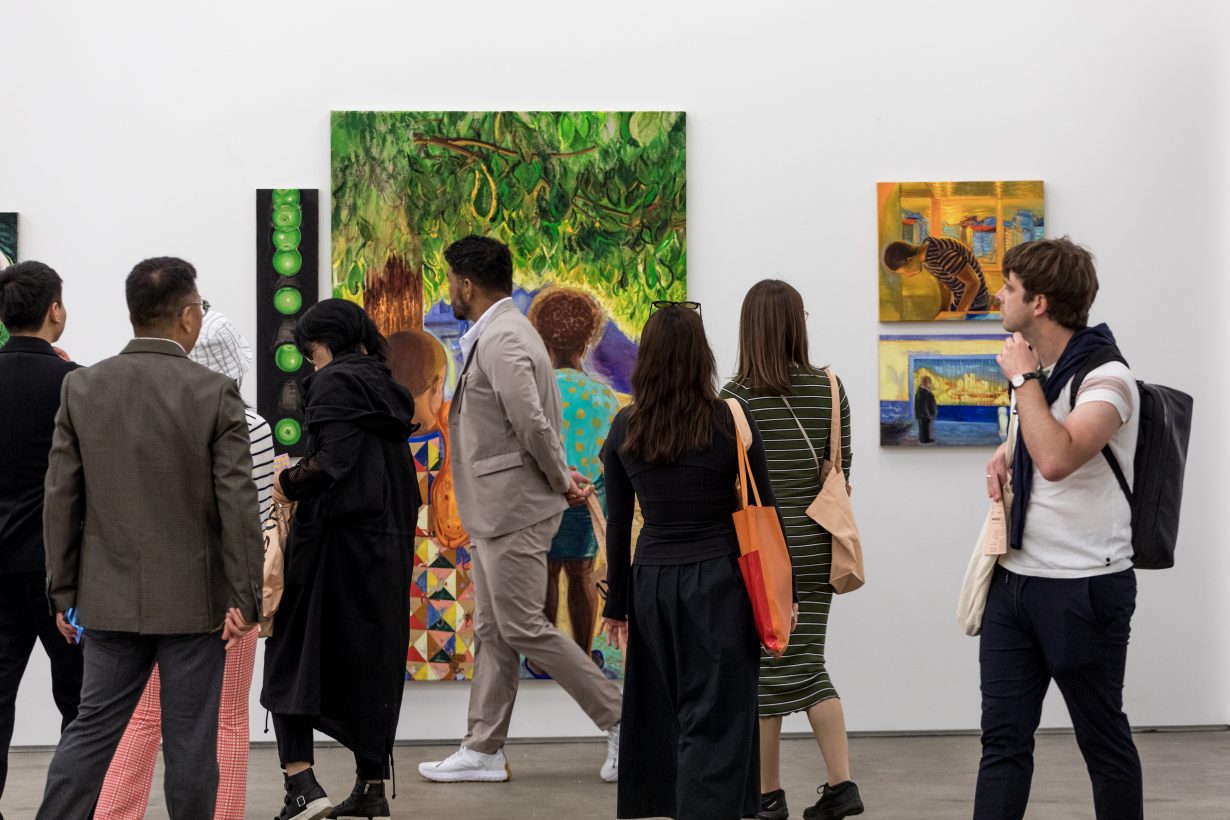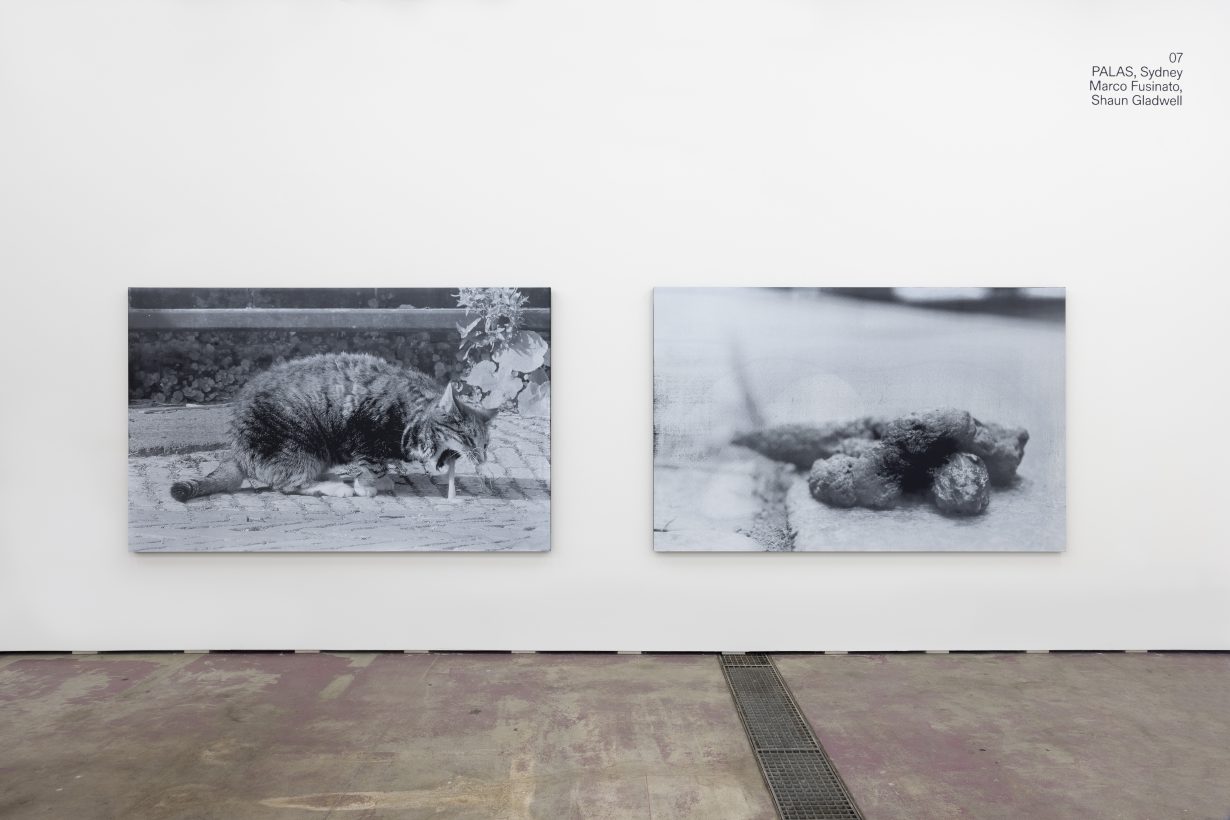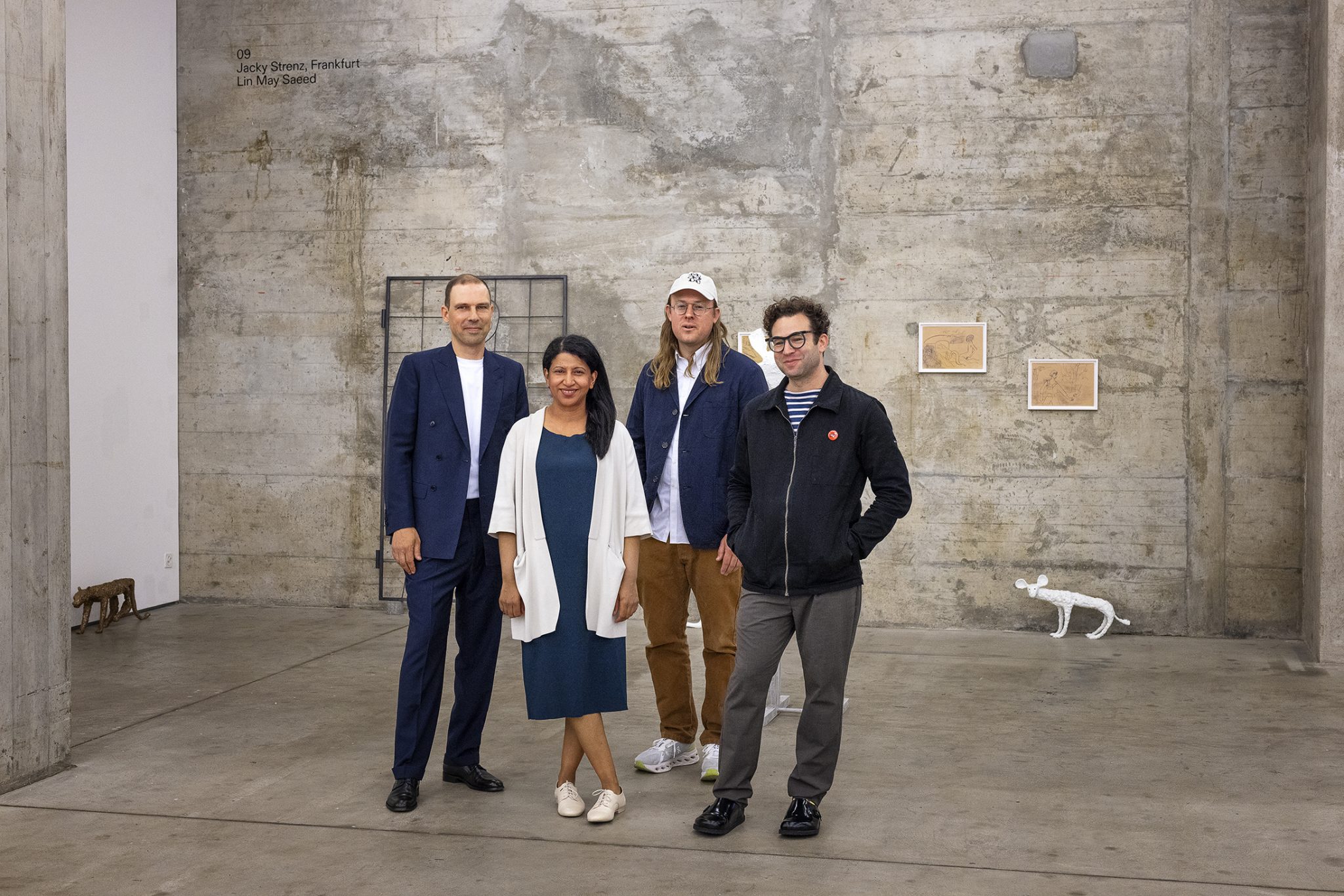This year, June Art Fair in Basel returned to Riehenstrasse 90b, a concrete bunker behind Messeplatz, for its sixth edition. The exhibitors behind the fair – Christian Andersen (Christian Andersen, Copenhagen), John Riepenhoff (The Green Gallery, Milwaukee), Jeffrey Rosen (Misako & Rosen, Tokyo) and Esperanza Rosales (VI, VII, Oslo) – discuss the gallery-led fair and exhibition platform.
ArtReview Now a Basel art week staple in many collector and VIP itineraries, June has been coming together as an independent gallery-led project since 2019. As dealers who are busy running galleries on a day-to-day basis and participating in other fairs throughout the year, why continue this project? Do the reasons for starting June Art Fair still remain urgent?
John Riepenhoff June foregrounds the importance of collaboration between owner-operated galleries and complements Basel art week by providing curators and patrons with rigorous and rewarding finds. Visitors to June can expect to see a focused group of galleries bringing the best, often under-recognised artists, from each of their regions. Now that we’ve done this for several iterations, we know that June is a tool that has helped to launch the careers of artists and been a resource for other galleries and museums to discover new talent. It’s also a prime market opportunity for international audiences.
Jeffrey Rosen The profit motive driving the commercial art world is no less strong than it was when the project began. One should expect more than a little messiness when trying realise an alternative to a paradigm. It’s also fun to feel like one is involved in an experiment. Add all of this up and you have the latest iteration of June.
Esperanza Rosales We still enjoy collaborating on this project together. Over time, I’ve come to think of participating in June as a self-validating gesture – not just an experiment, but an exercise in confidence: as galleries taking risks on behalf of artists.
Christian Andersen This attitude and approach takes on heightened meaning when presenting younger and less established positions. Not only is it important to do something brave for our artists on our own, it is also helpful to create a space to focus on new positions, with less distractions. We don’t want our artists’ projects or our programmes to get lost in fairs that are positioned as young, alongside 90 other galleries. The small number of galleries helps to create that.

AR What was the driving force behind this year’s iteration of the fair?
J Rosen Refinement. In a return to its roots, this year June really focused on the particular quality that is bred from a sense of community. So this year sees a smaller but more tightly knit number of member galleries and a greater sense of focus.
J Riepenhoff This year represented a focused, curated exhibition, where one could find ‘some of the best paintings in the world made today’ in our chic underground bunker. We were only steps away from Murdoch’s mega fair and it was free, if you could find us.
AR What were your personal highlights and recommendations from this year’s edition? What should visitors have had an eye on when visiting June?
ER I really enjoyed discovering Gabriel Hartley’s paintings, presented by Hagiwara Projects, a Tokyo based gallery as the week unfolded. PALAS, an exciting outfit from Sydney presented Libertas Vanitas (2019–2023) by Shaun Gladwell, an extended reality/360 degree video that lasts seven minutes. Not only is the experience of this moving piece itself worthwhile – walking around the space I could watch people getting lost in the experience of viewing it forever. It is worth noting that PALAS – which is founded by seasoned art world professionals Tania Doropoulos and Matt Glenn, chose June as their first fair to embark on, which is exciting to think about and also such an honour. Their participation leaves a deep impression; that of history in the making.
J Riepenhoff I was excited to see Lin May Saeed’s and Kaoru Arima’s work, among others, complementing new paintings by Margaret Lee in this year’s show.
J Rosen Cento from Glasgow operate a rigorously curated project space and the artist they presented, Rhett Leinster, embodies this spirit. Hagiwara Projects from Japan presented a gluttonous number of gems from London-born, Tokyo-based painter Gabriel Hartley. These two highlights of the fair were presented adjacent to one another. Also worth noting is the participation of PHD Group from Hong Kong – a co-founder of the initiative Supper Club.
ER You might have noticed that the toilet paper in our bathroom said ‘Angst’ on it? This is the work of Henrik Plenge Jakobsen, a Danish conceptual artist whose work involves performance and public interaction. For me, this piece was a reminder that every aspect of the fair is thought about and considered. June is not just a fair. Since the beginning, it has addressed the unspoken question: how can the experience of a fair be different – for us as galleries and for the audience?
CA There’s also a fair share of video presented this year by VI, VII (based in Oslo), PHD Group and PALAS, that was worth checking out.

AR Any personal highlights of the fair week in general, for other shows or events that happened last week?
J Rosen I have a soft spot for the Japan-focused exhibition curated by Anne Mosseri-Marlio for the Based-based gallery Niclas Krupp.
J Riepenhoff Flora Klien presented new paintings as part of the Swiss Art Awards exhibition and I was personally happy to be showing my own paintings with Tanya Leighton Gallery at Messeplatz.
ER Swiss artist Tobias Kaspar took over a flower shop at Clarastrasse 5 as part of his project Day Flowers. This was really gorgeous to pass by on the way to the fair.
AR Can you tell us about your experience of participating in other gallery-led fairs and exhibition platforms and how June fits into this landscape of ‘experiments’? Jeffrey, your gallery for example is participating in an astonishing number of fairs this year – 17 in total.
J Riepenhoff The artist-centric spirit of June and its collaborative nature are what first attracted me to participate and to continue to come back every year. We get the best visitors. Industry insiders expect to make discoveries at June and to see important artists in new contexts. I think self-organised fair initiatives have the capacity to be ultra contemporary in their programming and cultural relevance.
ER June is the first gallery-led experiment in Basel, after Liste, to model itself as a fair. It is also the only satellite fair project I can think of that maintains such close proximity to a ‘main fair’ the size of Art Basel. We also have a garden, tended to by local residents and artists throughout the year, which creates a pretty distinct experience. Not least of all in a fair week as busy as this one.
J Rosen Almost as satisfying as the quality of community that such initiatives breed is the reaffirming of our collective practice as gallerists. When we’re back next year, we encourage visitors to Basel to take a moment to relax and explore some exceptional art at June.
Find out more at the June Art Fair website or follow the fair on Instagram.
